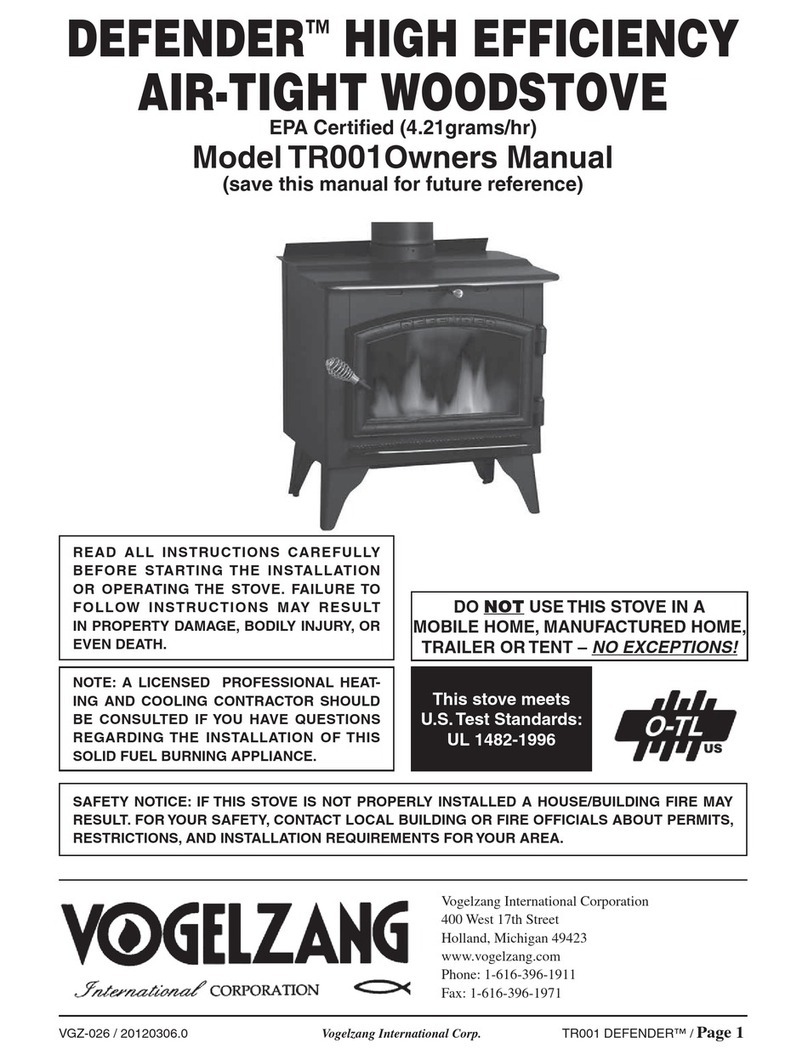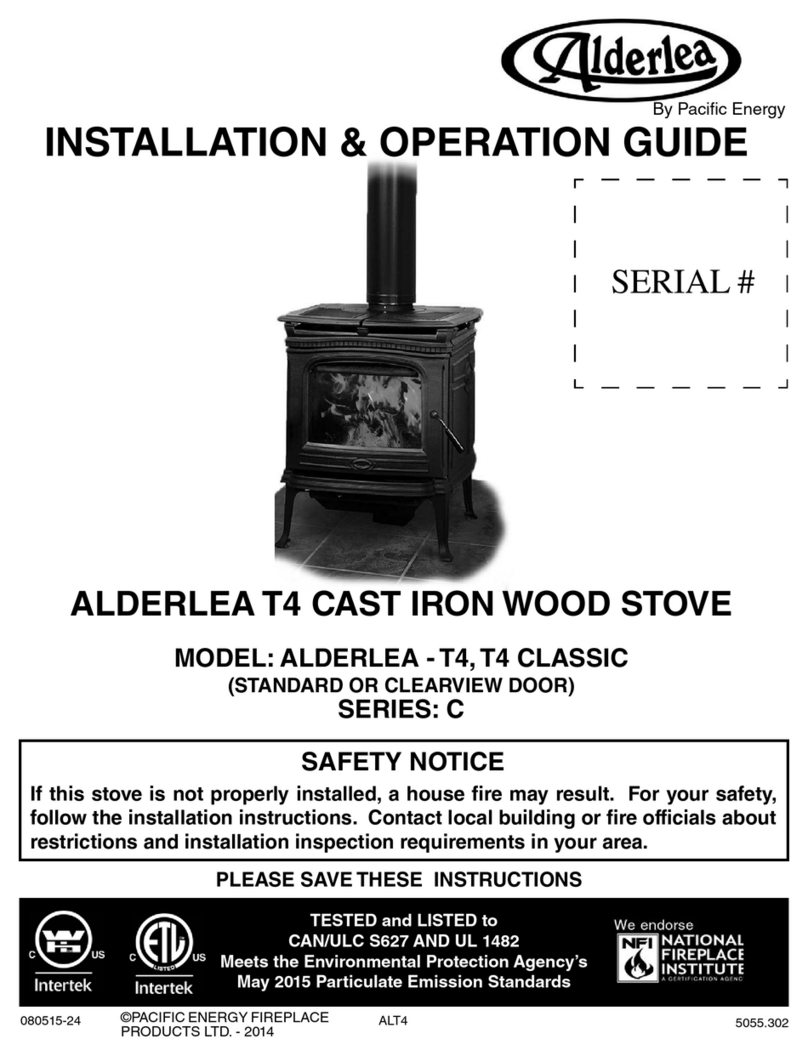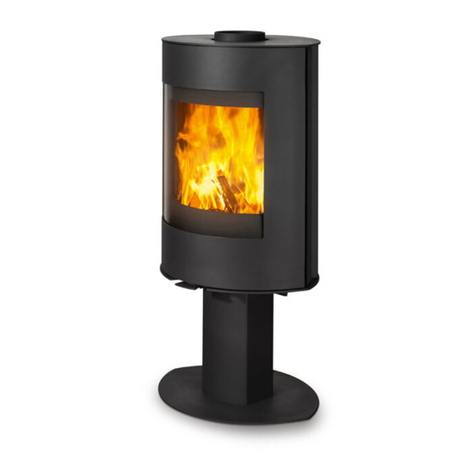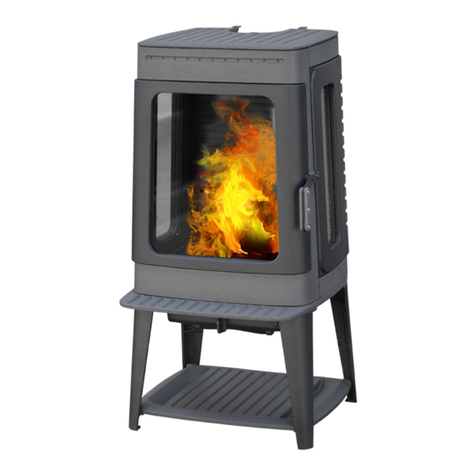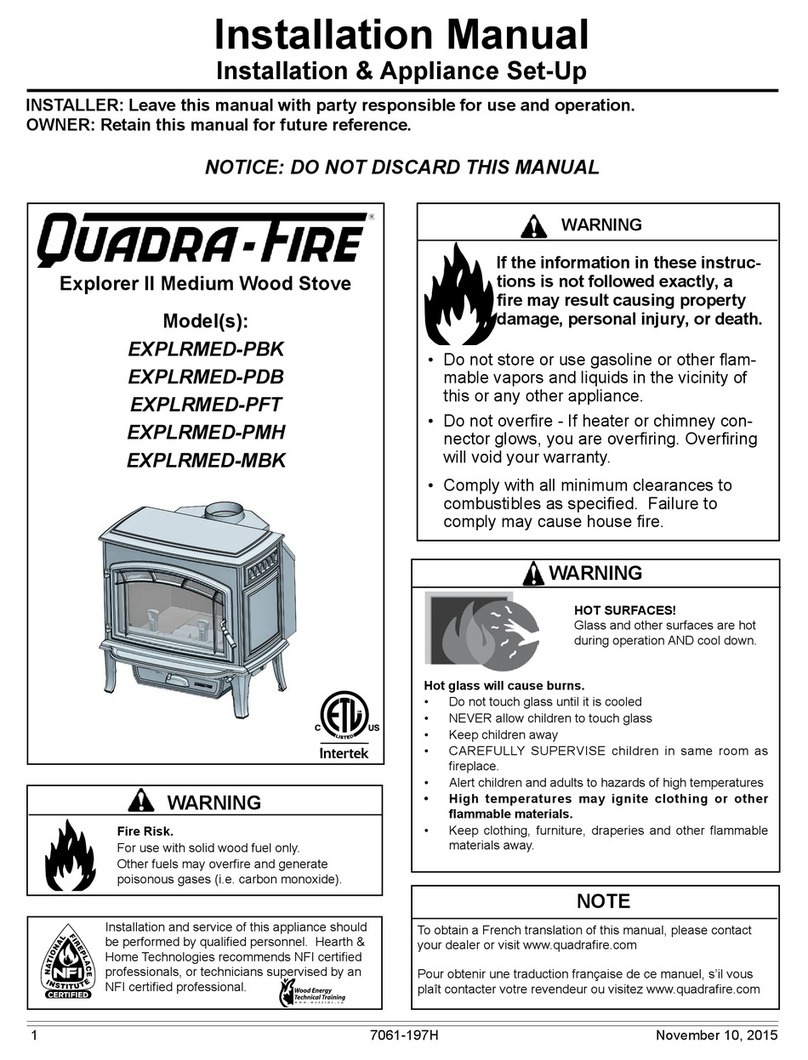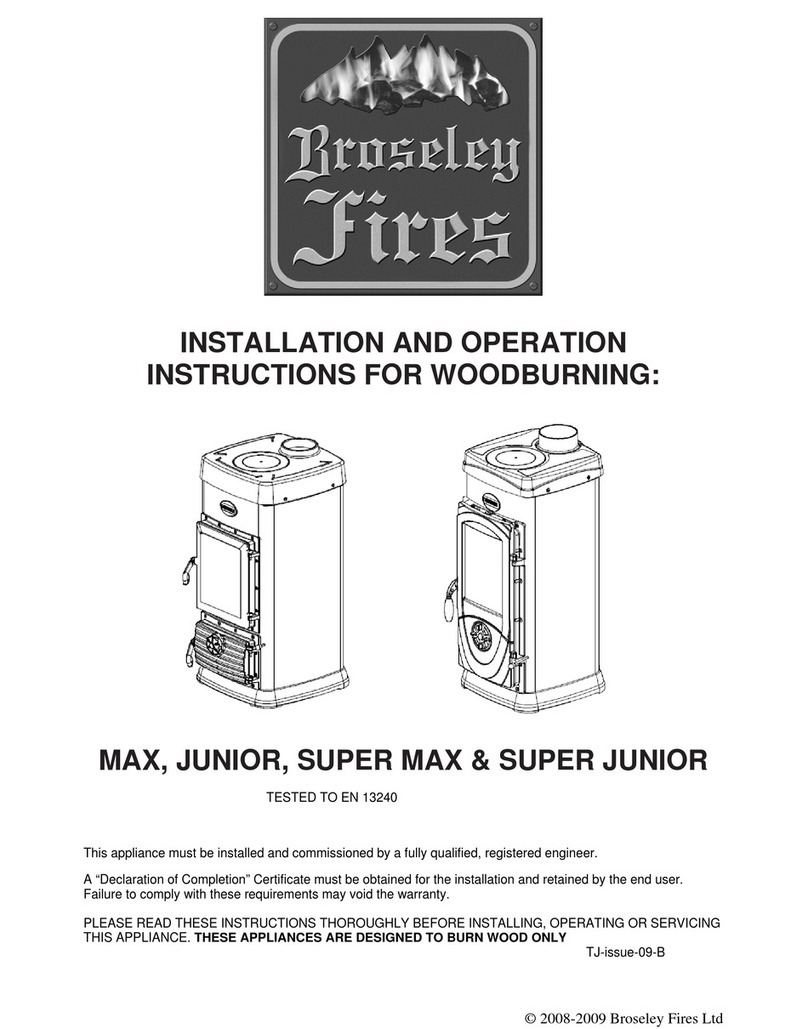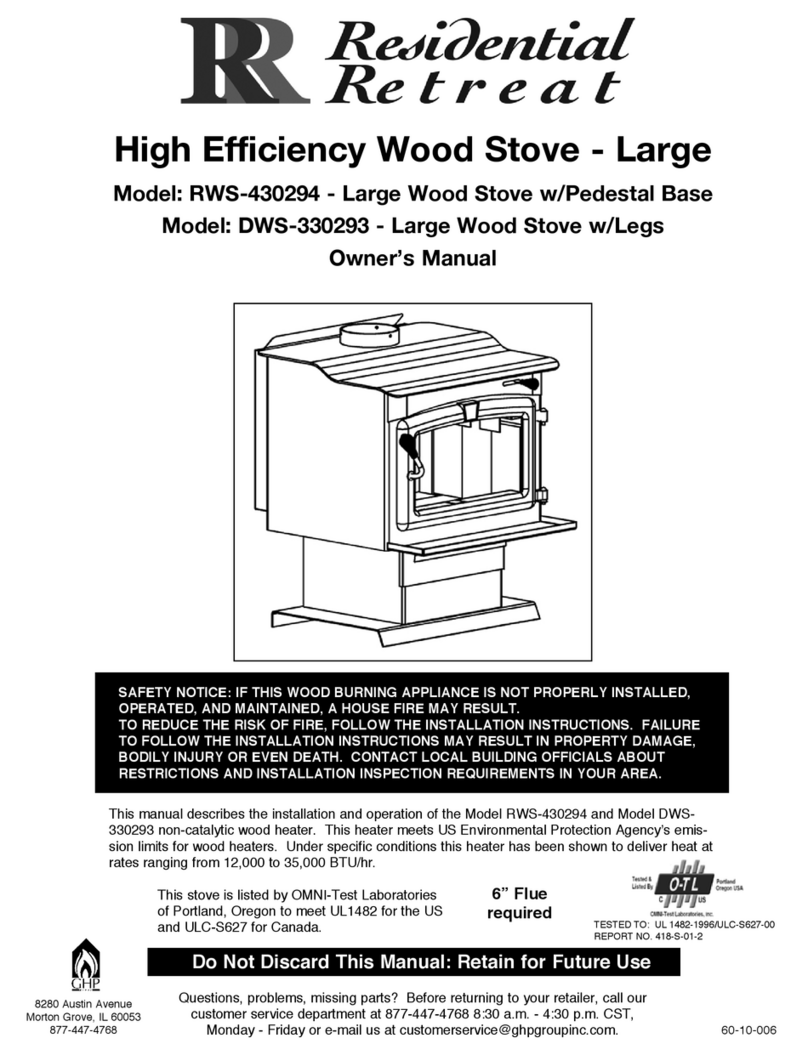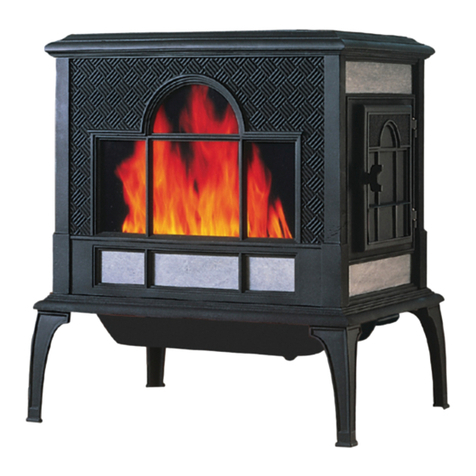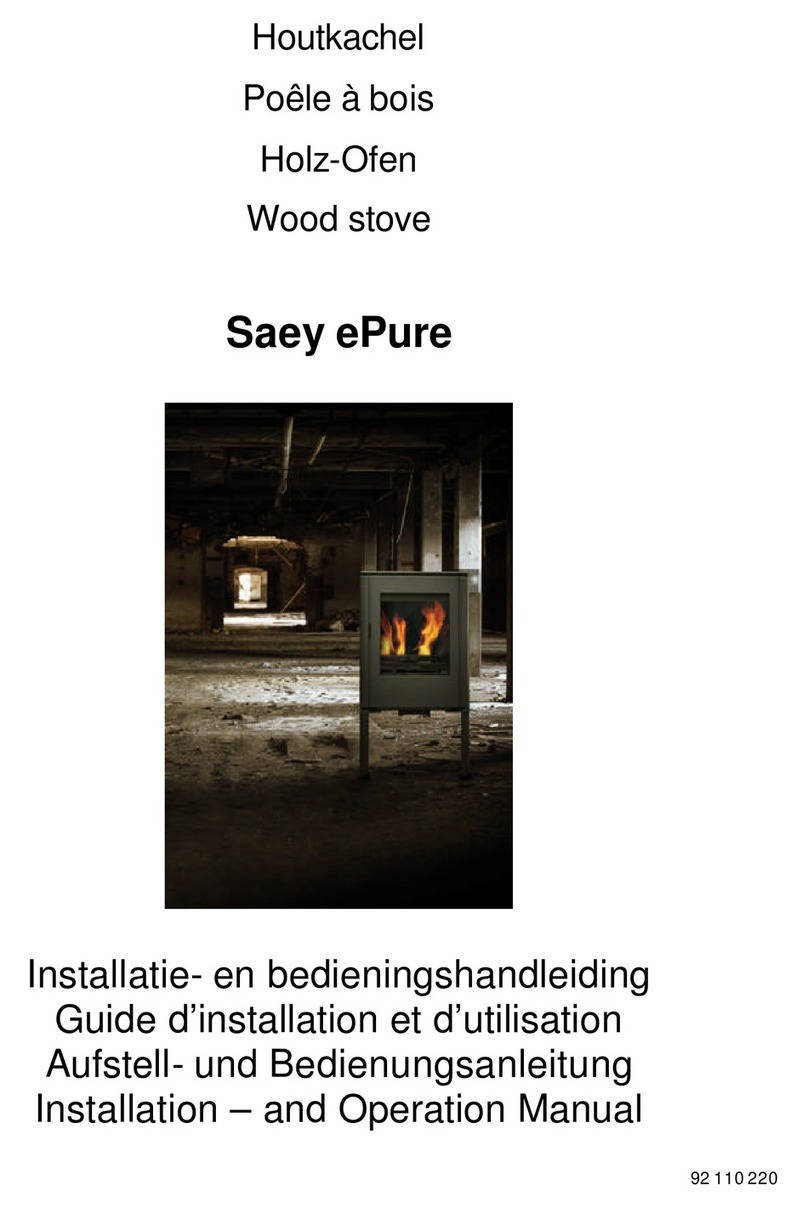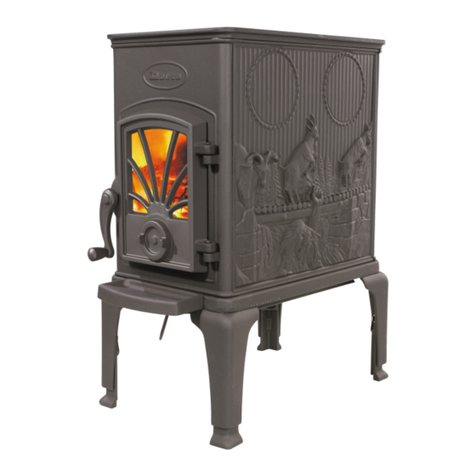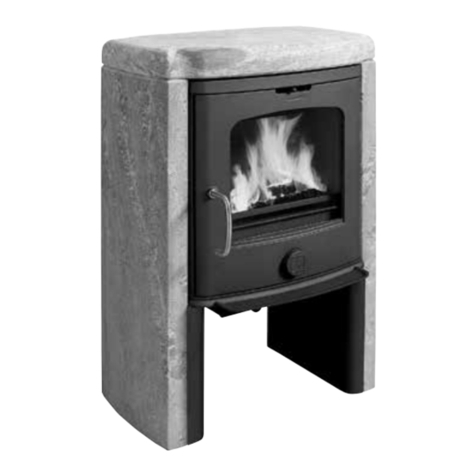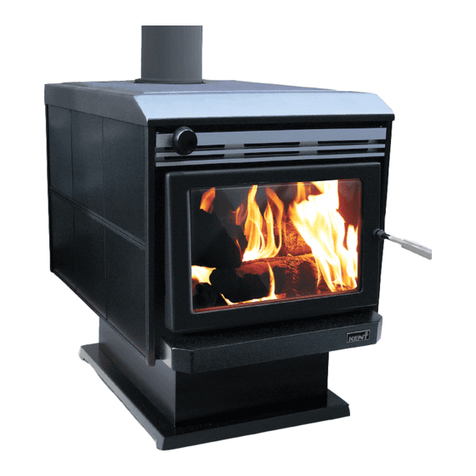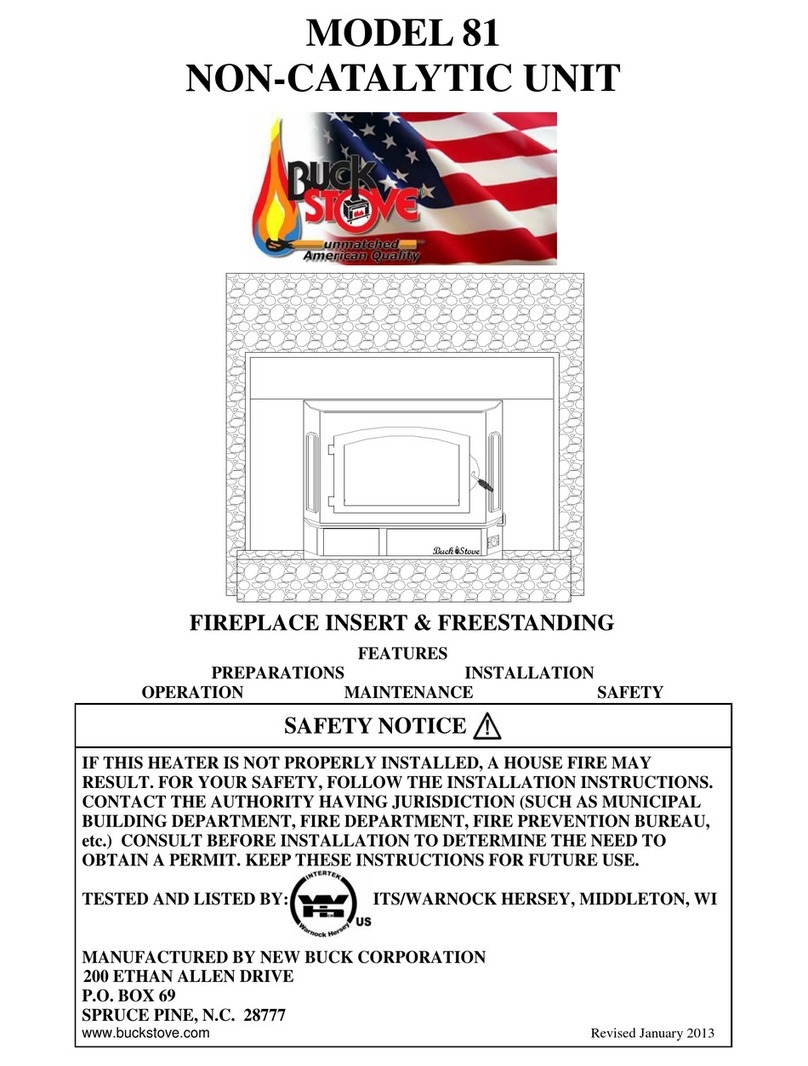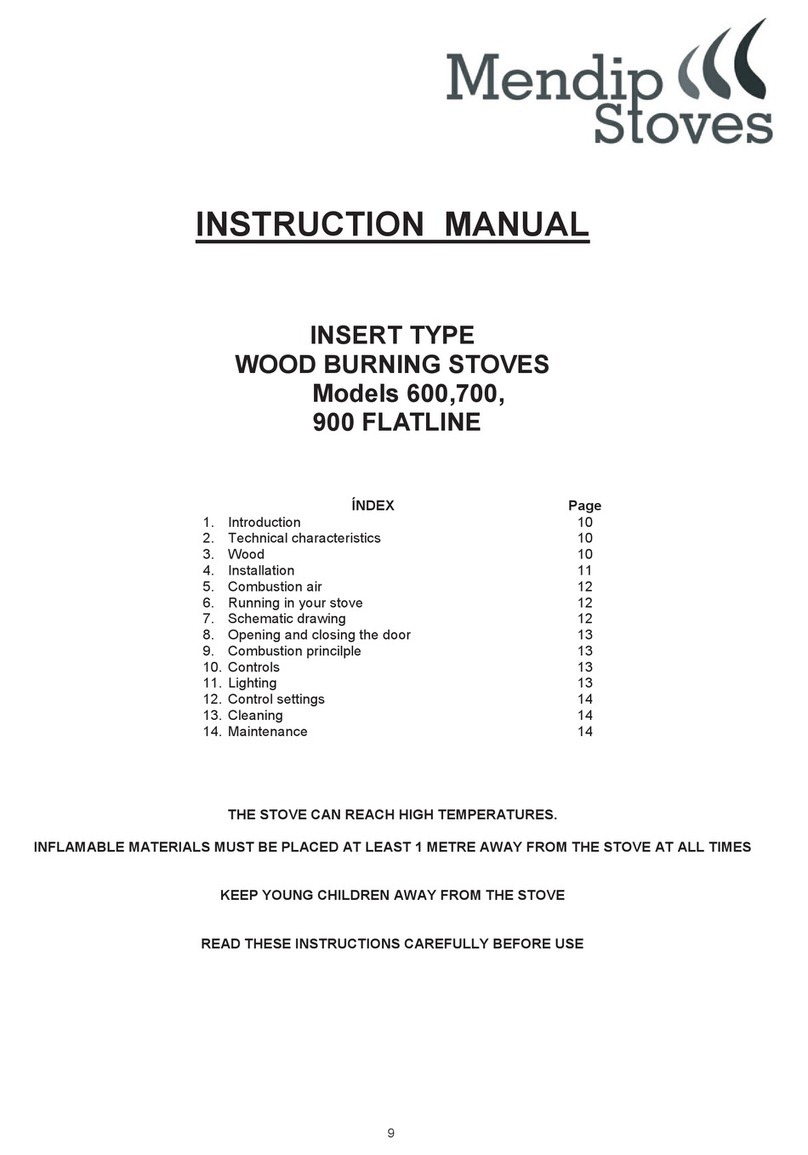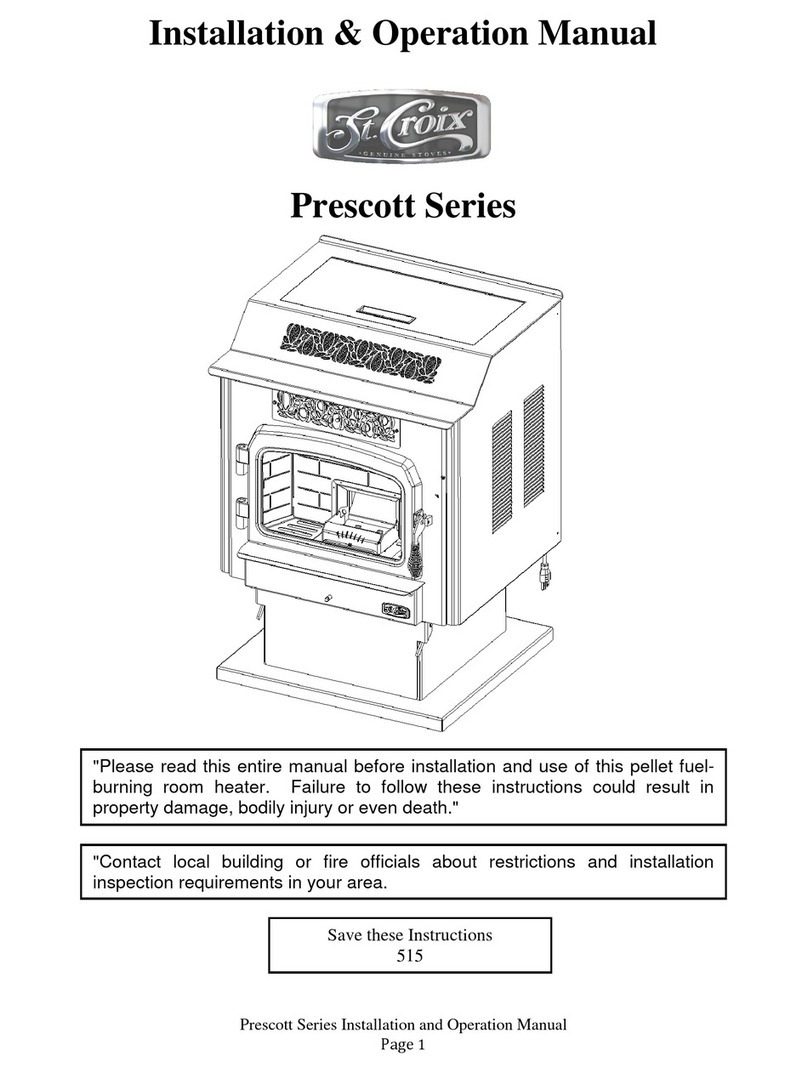
2
1) The installation of this stove must comply with your local
building code rulings. Please observe the clearances to
combustibles (see reference figures 7– 9). Do not place
furniture or other objects within the clearance area.
2) Verify that the stove is properly assembled and installed
before firing the stove for the first time. After reading these
instructions, if you have any doubt about your ability to
complete your installation properly, you must obtain the
services of a professional licensed installer familiar with
all aspects of safe and correct installation. DO NOT USE
TEMPORARY OR MAKESHIFT COMPROMISES
during installation. There must be NO DEVIATION OR
ALTERATION OF ANY KIND from the very specific
instructions spelled out in this instruction manual as it pertains
to the installation of this woodstove. NO EXCEPTIONS!
3) DO NOT store wood, flammable liquids or other combustible
materials too close to the unit. Refer to certification label
on back of unit and reference figures 7 – 9 in this manual.
4) DO NOT INSTALL THIS STOVE IN A MOBILE HOME,
MANUFACTURED HOME, TRAILER OR TENT – NO
EXCEPTIONS! (HUD Federal Standard: 24 CFR Ch.XX).
5) DO NOT ELEVATE THIS STOVE BY ANY MEANS.
(i.e. bricks under base, cement blocks) Stove pedestal base
must set directly upon the solid-surface non-combustible
floor as specified in this stove instruction manual. DO
NOT MODIFY THIS STOVE IN ANY WAY! Stove must
be installed with pedestal base and ash drawer provided,
attached as shown in the instructions. DO NOT OPERATE
WITHOUT ASH DRAWER OR ASH CLEAN OUT
COVER IN PLACE – NO EXCEPTIONS. Assemble only
with original parts as supplied and shown in this manual.
DO NOT OPERATE A STOVE THAT IS MISSING ANY
PARTS! If any parts are missing or defective, please notify
the dealer or manufacturer immediately. Replace missing,
broken or worn parts with factory original or equivalent
parts only.
6) CAUTION: DO NOT ALTER COMBUSTION AIR
CONTROL RANGE TO INCREASE FIRING OR FOR
ANY REASON. Altering or tampering with air control
beyond normal capacity will create unsafe and hazardous
conditions.
7) Always connect this stove to a chimney and vent to the
outside. Never vent to another room or inside a building.
DO NOT CONNECT THIS UNIT TOA CHIMNEY FLUE
SERVING ANOTHER APPLIANCE.
8) DO NOT CONNECT A WOOD BURNING STOVE TO
AN ALUMINUM TYPE B GAS VENT. This is not safe.
Use code-approved lined masonry or a UL 103 HT Listed
Residential Type and Building Heating Appliance chimney.
Use a 6” diameter chimney or larger, that is high enough to
give a good draft. (See specifics in installation instructions).
9) Be sure that your chimney is safely constructed and in good
repair. Have the chimney inspected by the fire department
or a qualified inspector. Your insurance company should be
able to recommend a qualified inspector. Chimney connector
pipe must be in good condition. Replace if necessary before
using stove.
10) Creosote or soot may build up in the chimney connector
and chimney and cause a house/building fire. Inspect the
chimney connector and chimney twice monthly during the
heating season and clean if necessary. (See Service Hints,
page 14)
11) IN THE EVENT OF A CHIMNEY FIRE, turn the air
controls to closed positions, leave the building and CALL
THE FIRE DEPARTMENT IMMEDIATELY! Have a
clearly understood plan on how to handle a chimney fire
by contacting your local fire authority for information on
proper procedures in the event of a chimney fire. After the
fire is out, the chimney must be cleaned and inspected for
any stress or cracks before starting another fire. Check the
condition of any combustibles surrounding the chimney.
12) To prevent injury, do not allow anyone to use this stove who
is unfamiliar with the correct operation of the stove.
13) Do not allow ashes to accumulate above top of ash drawer.
14) DISPOSAL OF ASHES: Ashes should be placed in a metal
container with a tight fitting lid. The closed container of
ashes should be placed on a noncombustible floor or on the
ground, well away from all combustible materials, pending
final disposal. If the ashes are disposed of by burial in soil
or otherwise locally dispersed, they should be retained in the
closed container until all cinders have thoroughly cooled.
15) The special paints used on your stove may give off some
smoke and an odor while they are curing during the first
12 to 15 fires. Additional smoke and odor may be emitted
from the light oils used in construction of the fire box. This
should disappear after a short period of time and not occur
again. Persons with lung conditions or owners of susceptible
domestic pets (such as birds) should take prudent precautions.
Open windows and doors as needed to clear smoke and/or
odor. Paint discoloration will occur if the stove is over fired.
16) This stove has a painted surface which is durable but it will
not stand rough handling or abuse. When installing your
stove, use care in handling.
17) DO NOT ELEVATE THE FIRE. Build fire directly on the
bottom of the firebox. This stove has not been tested with
the use of grates, andirons or other means of elevating the
fire and must not be used.
18) CLEAN STOVE FREQUENTLY as soot, creosote and ash
may accumulate. Clean exterior with soap and warm water
when stove is not hot. Do not use any acids or scouring soap,
as these solvents wear and dull the finish.
19) Do not operate stove while under the influence of drugs or
alcohol
20) ALERT ALL PERSONS TO THE HAZARDS OF HIGH
SURFACE TEMPERATURES while stove is in operation
– especially young children. Keep away from a hot stove to
avoid burns or clothing ignition.
SAFETY




















